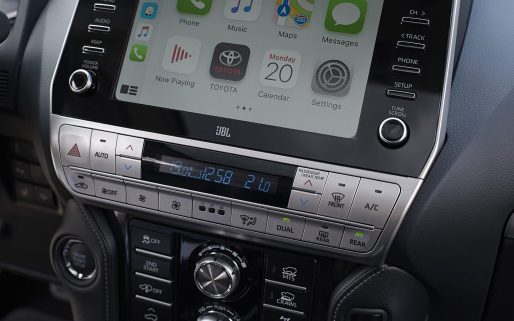Why do we have airbags in cars?
Airbags have been used within the automotive industry since the 1940s and were initially designed as a primary life-saving feature because people were reluctant to restrain themselves with seat belts.
In later decades, the automotive industry and regulatory bodies came to realise that airbags were actually most effective at saving lives in car accidents when complementing three-point seat belts as the primary means of restraint. This is the reason why the airbag became designated as a Supplemental Restraint System (SRS).
How has Toyota improved the role of airbags as a safety feature?
Since the airbag’s introduction as an SRS in 1981, the number of airbags inside each vehicle has multiplied and Toyota has played an important role in improving the effectiveness of these devices within the industry.
For instance, the 1998 Toyota Avensis was the first car in Europe to feature nine airbags, one of which was Europe’s first driver’s knee airbag. Later, in 2008, Toyota used the iQ to introduce the first rear curtain shield airbag in a production car, as well as airbags in the seat cushion to prevent a body ‘submarining’ below the lap belt. A year afterwards, Toyota was the first manufacturer to install a rear seat centre airbag to reduce secondary injuries to rear passengers.
Why do airbags not always deploy in an accident?
Considering that airbags are extremely effective at reducing injury in the event of an accident, some owners have questioned why they occasionally appear to have failed to deploy. Might it mean that an individual component is faulty, or that the overall system is flawed?
The answer to these questions goes back to the fact that airbags are primarily designed to provide further protection for the driver and passengers in addition to the primary safety protection provided by the seatbelts.
A multitude of sensors installed throughout the vehicle analyse the severity of any impact as well as the level of intrusion into the rigid passenger compartment. If the pre-programmed safety parameters are exceeded, the SRS will instruct the relevant airbag or airbags to deploy and protect the occupants in potential danger. This decision-making process and the physical deployment of an airbag takes place in milliseconds – literally faster than the blink of an eye.
Under what circumstances might an airbag not deploy?
There are a number of circumstances in which it is unlikely that certain airbags need to be deployed. Examples of this include impacts where the passenger compartment is not directly impacted, frontal collisions at low speed, collisions where the impact glances the body of the car at an angle, and impacts against objects that have a degree of flexibility, such as small trees. Airbags may also not demonstrate their primary effectiveness if a vehicle rolls or turns over.
Is the Supplemental Restraint System reliable?
Faults within airbags or any component within the entire Supplemental Restrain System are rare. So if the system notifies you through an airbag indicator light in the dashboard that it has sensed a potential problem, it is wise to get it checked by a Toyota professional as soon as possible.




Toyota yaris 05 plate has airbag indicator light flashing. How much does it cost to get checked please
Hi Wendy,
Thanks for getting in touch.
We’d recommend contacting your nearest Toyota centre for a quote.
You can find your closest centre, here: https://www.toyota.co.uk/forms-v2/forms?tab=pane-dealer
Thanks.